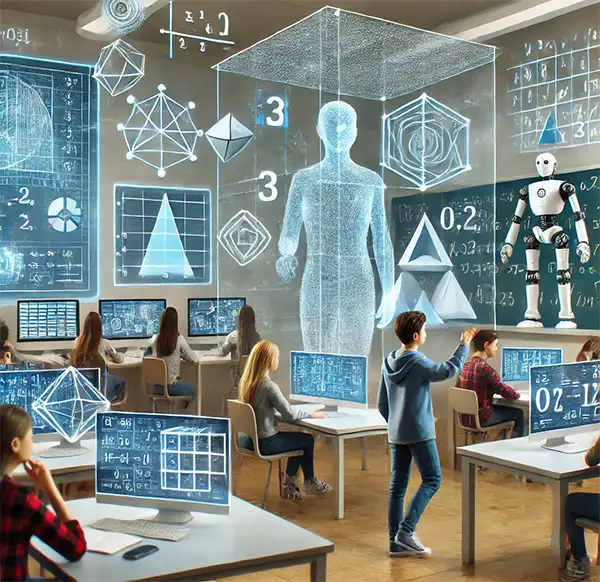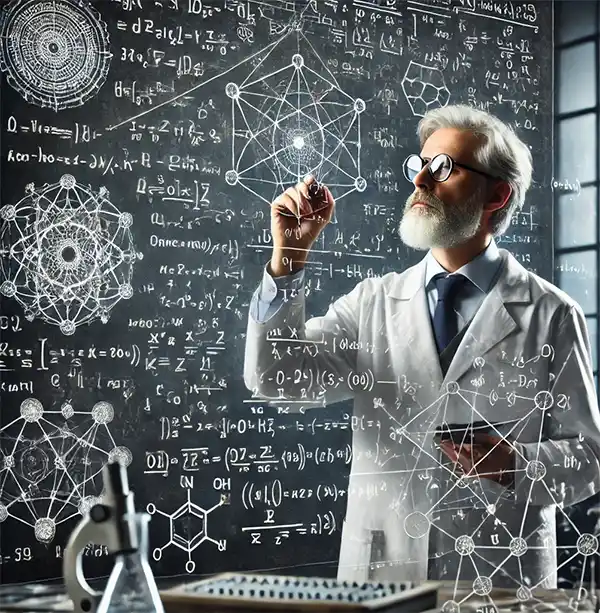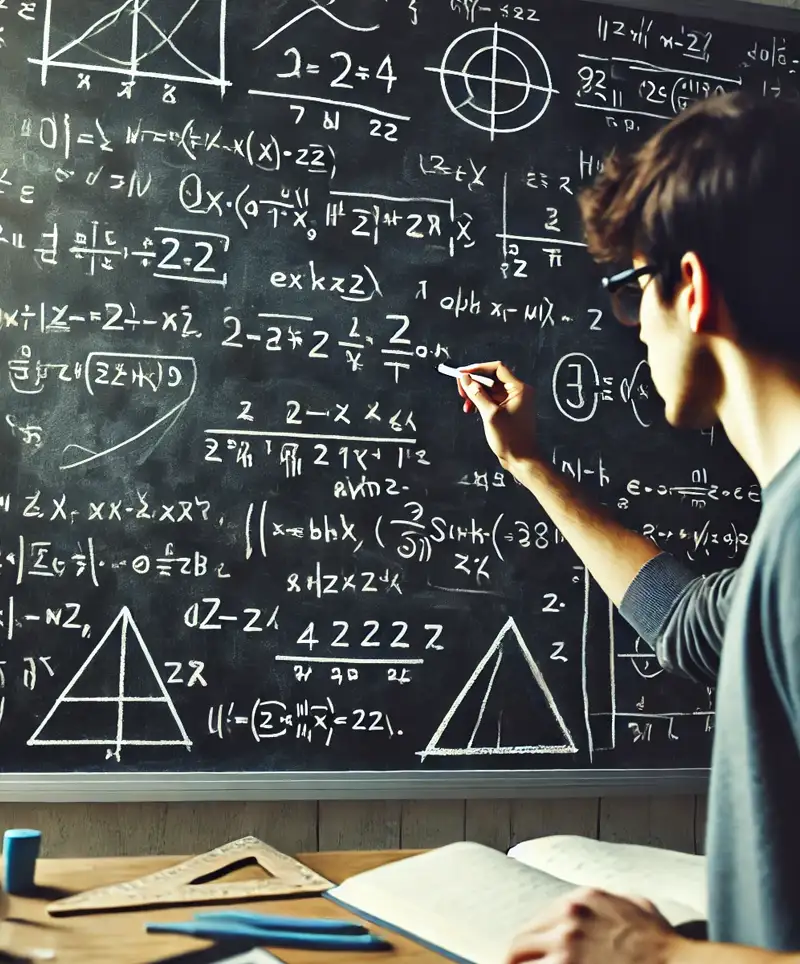Celebrating the Evolution of Numbers and Nerdiness
Every year on July 8th, Math 2.0 Day celebrates the delightful intersection of mathematics and technology. It’s a day to appreciate how math has evolved from ancient counting stones to the digital wonders that run our modern world. Grab your calculator, dust off your geometry set, and get ready to dive into a world where numbers and technology come together in perfect harmony.
 From Counting Pebbles to Calculus
From Counting Pebbles to Calculus
Long before we had sophisticated calculators and complex software, early humans were laying the foundations of mathematics with the simplest of tools. Picture our prehistoric ancestors, huddled around a campfire, using pebbles to keep track of their belongings or to trade with neighboring tribes. These humble beginnings of counting and arithmetic were crucial for survival and trade.
As civilizations flourished, so did the complexity of their mathematical needs. The ancient Egyptians, for instance, developed a numbering system to manage agriculture, taxation, and construction projects, like the awe-inspiring pyramids. They used hieroglyphs to represent numbers and even created early forms of geometry to survey land after the annual flooding of the Nile.
The Greeks took math to new intellectual heights. Mathematicians like Euclid and Archimedes made groundbreaking contributions. Euclid’s "Elements" became the textbook for geometry, introducing concepts like points, lines, and planes, which still form the basis of the subject today. Archimedes, on the other hand, was the original "mad scientist," known for his work in calculus and for exclaiming "Eureka!" when discovering principles of buoyancy.
Fast forward to the Islamic Golden Age, where scholars like Al-Khwarizmi (whose name gave us the term "algorithm") and Al-Haytham (a pioneer in optics) translated and expanded upon Greek mathematical texts. They introduced the decimal number system and algebra, which revolutionized the way we perform calculations and solve equations.
In the Renaissance, European mathematicians like Fibonacci, who introduced the famous sequence that bears his name, and René Descartes, who invented Cartesian coordinates, further advanced mathematical knowledge. Calculus, developed independently by Isaac Newton and Gottfried Wilhelm Leibniz, emerged as a powerful tool for understanding change and motion. Their work allowed us to model everything from planetary orbits to the fluctuations of financial markets.
The Birth of Math 2.0
The term "Math 2.0" might sound like a software upgrade, and in a way, it is. The 20th century brought about the digitization of mathematics. Thanks to pioneering mathematicians and computer scientists like Alan Turing and Ada Lovelace, math leaped from chalkboards to silicon chips. Suddenly, complex calculations that once took hours could be solved in milliseconds.
Math isn’t just for classrooms and laboratories. It has permeated our pop culture in surprising ways. Remember the iconic scene in "Good Will Hunting" where Matt Damon's character solves a near-impossible math problem on a chalkboard? Or how about "The Big Bang Theory," where Sheldon Cooper's love for theoretical physics brought math jokes into our living rooms? Math is everywhere, from the code in your favorite apps to the algorithms recommending your next Netflix binge.
Today, math is the backbone of technology. Every time you use GPS to find the nearest coffee shop or marvel at the latest CGI in blockbuster movies, you're witnessing math in action. Algorithms, which are essentially fancy math recipes, power everything from search engines to social media feeds. Without math, our smartphones would be pretty dumb.
 Math Gone Wrong
Math Gone Wrong
Let’s face it: math doesn’t always play nice. There are times when equations seem to morph into unsolvable beasts, calculators produce baffling errors, and real-world applications of math go hilariously awry. Whether it’s the fault of a decimal in the wrong place or sheer human overconfidence, math has its fair share of bloopers.
One famous example is NASA’s Mars Climate Orbiter, a $125 million spacecraft that crashed and burned—figuratively and literally—in 1999. The reason? A mix-up between metric and imperial units. One team used pounds of force while another used newtons, and the resulting miscalculation sent the orbiter hurtling into oblivion. If ever there was a need for double-checking your work, this was it.
And who could forget the time a misplaced decimal point caused a supermarket pricing fiasco? A grocery store mistakenly advertised $10 turkeys as 10 cents each. Chaos ensued as customers lined up with shopping carts full of poultry, and the store scrambled to correct the error. That’s the kind of math mistake that turns Thanksgiving into Thanks-a-lot-for-the-free-turkey Day.
Even in education, math has been known to spark confusion. Take the viral "new math" worksheet controversies, where parents across the globe struggled to help their kids with methods they’d never seen before. Terms like "number bonds" and "decomposing numbers" left adults scratching their heads and longing for the good old days of straightforward long division.
And then there’s the lighter side of math errors—when they become unexpected sources of humor. Remember the time a restaurant proudly displayed a sign that read: “Kids eat free! With purchase of 2 adult meals priced at $50 or more.” Some clever soul quickly pointed out that this wasn’t exactly a deal but rather an advanced exercise in subtraction.
Of course, math fails aren’t exclusive to humans. Algorithms, those mighty mathematical engines that run our digital world, can also go off the rails. A notable instance occurred when an online retailer’s pricing algorithm accidentally set items to absurdly low prices. Shoppers snagged laptops for $50 and TVs for $20, while the company reeled from the unexpected fire sale.
Math gone wrong reminds us that while numbers are precise, humans (and sometimes machines) are anything but. But hey, at least we can laugh about it—most of the time. After all, mistakes are just opportunities to learn...or to stock up on hilariously cheap turkeys.
Celebrating Math 2.0 Day
So, how do we celebrate Math 2.0 Day? Here are a few fun ideas:
-
Explore Educational Apps: Download a math app and challenge yourself with puzzles and problems. Who knows, you might end up enjoying it!
-
Attend a Math-Themed Event: Many universities and science centers host special events on Math 2.0 Day. Check out a lecture or a workshop to learn something new.
-
Share a Math Meme: Spread the joy of math with a funny meme or joke on social media. Your friends might groan, but they’ll secretly appreciate it.
-
Tackle a Math Project: Whether it’s coding a simple program or solving a complex equation, dive into a math project that excites you.
Math 2.0 isn’t just for mathematicians and tech geeks. It affects all of us in ways we might not even realize. Every time you budget your expenses, cook a recipe, or even just split a bill at a restaurant, you’re engaging in Math 2.0. It’s a reminder that math is not just an abstract concept but a practical tool that helps us navigate the world.
Math 2.0 Day is more than just a celebration of numbers and technology; it’s a tribute to human ingenuity and our endless quest to understand the universe. So, on July 8th, let’s give a nod to the mathematicians and technologists who have made our world a more logical place. Embrace your inner math geek, solve a puzzle, and remember: in the grand equation of life, math always adds up.
Please Share our Content






 From Counting Pebbles to Calculus
From Counting Pebbles to Calculus Math Gone Wrong
Math Gone Wrong








 "Sláinte!" is a traditional Irish expression used as a toast, equivalent to "Cheers!" in English.
"Sláinte!" is a traditional Irish expression used as a toast, equivalent to "Cheers!" in English.